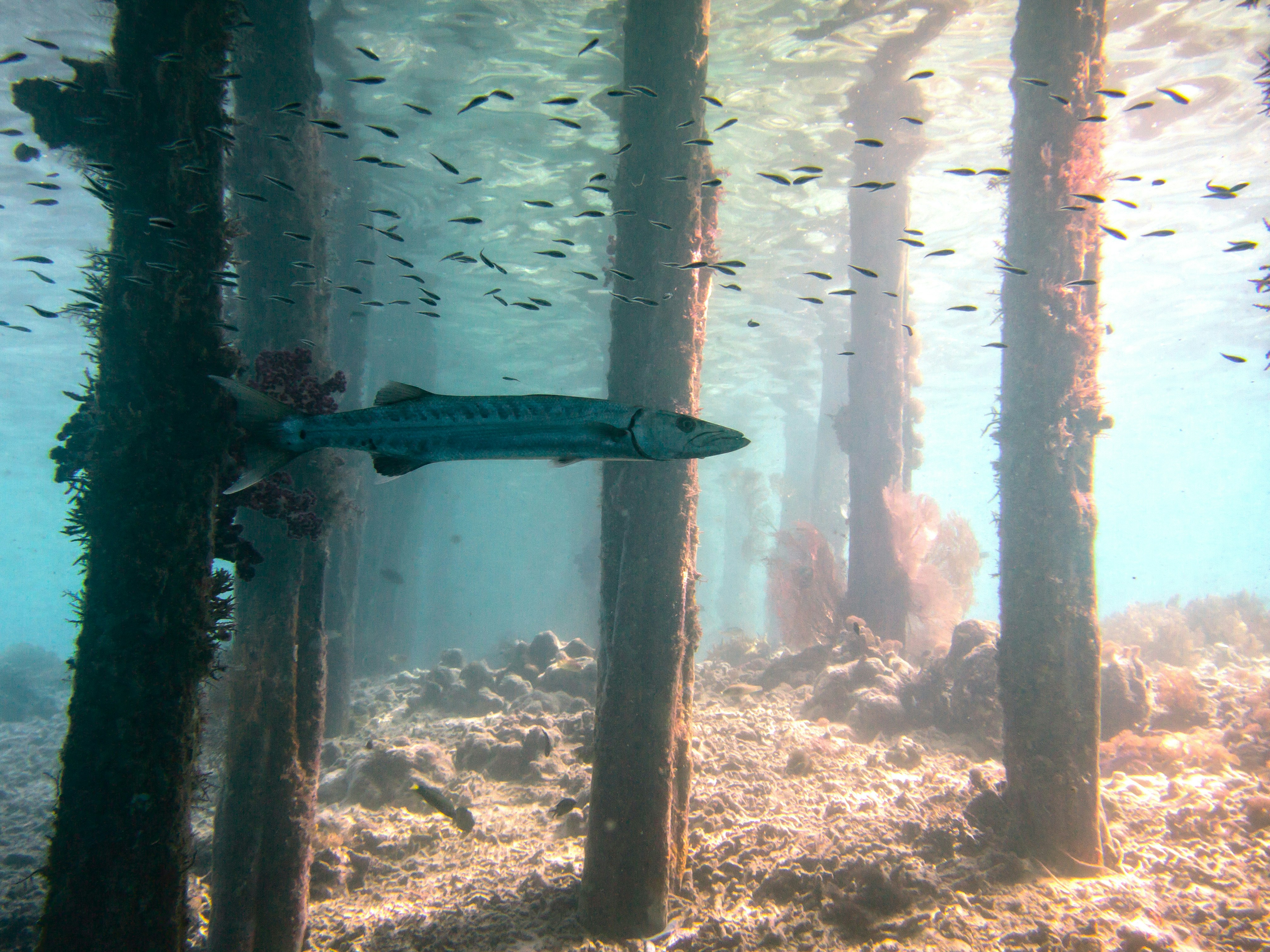Announcing the 2025 Gulf Ecosystem Initiative Working Groups

The Gulf Ecosystem Initiative (GEI), a partnership between the National Center for Ecological Analysis and Synthesis (NCEAS) and the NOAA RESTORE Science Program, continues to expand its collaborative research efforts in the Gulf of America. GEI funds synthesis science and postdoctoral research that advances natural resource management in the region, with a focus on fisheries, climate change, and the ecological effects of management decisions.
In 2025, two new working groups will join the GEI community. Their work explores timely and interdisciplinary questions in the Gulf of America—ranging from the ecological role of marine artificial structures to the integration of artificial intelligence into fisheries science.

Exploring How Artificial Structures Shape Gulf Ecosystems
Marine artificial structures — such as oil and gas platforms, wind turbines, and artificial reefs — have been introduced into the Gulf of America for more than a century, yet many questions remain about their ecological impacts. As offshore development accelerates to meet growing energy demands, it is critical to understand how these structures influence reef fish communities and ecosystem dynamics.
One of the new GEI working groups, led by Dr. Avery Paxton (NOAA Fisheries’ Southeast Fisheries Science Center) and Dr. Matthew Woodstock (University of Miami Cooperative Institute for Marine and Atmospheric Studies), will synthesize existing data to better understand how reef fish interact with marine artificial structures.
“We will convene a team of scientists and decision makers to synthesize existing information on how reef fish use artificial structures as habitat, helping to solve a longstanding scientific puzzle,” said Paxton.

Barracuda explores marine artificial structures. Heidi Bruce from Unsplash.
“We aim to understand the ecological effects of marine artificial structures on reef fish communities,” added Woodstock. In an effort to connect the puzzle pieces, their team will “identify knowledge clusters and gaps in existing literature using systematic mapping, assess trends in reef fish abundance and community composition through a time series analysis, and examine how different ways of managing artificial structures may affect reef fish communities using ecosystem modeling.”
The findings are expected to inform management decisions around the installation, removal, or repurposing of artificial structures as offshore energy development continues—a longstanding issue that demands timely scientific insight.
“What’s most exciting about this project is that the findings are expected to inform effective decision making on installing artificial structures, as well as removing or repurposing them at sea when they reach the end of their life,” added Paxton. “This will be increasingly important should additional artificial structures be installed in the U.S. ocean to help build energy security.”
Woodstock emphasized the collaborative potential of the project. “This is an opportunity to bring a group of researchers, federal agency representatives, state managers, and other stakeholders together in one room and discuss the complicated topic of the ecological impacts of marine artificial structures in the Gulf of America,” he said
Leveraging Artificial Intelligence to Advance Fisheries Management
In parallel, a second GEI working group will examine how emerging artificial intelligence (AI) technologies can be applied to fishery management and ecological forecasting in the Gulf of America. The group, led by Dr. Kelsi Furman, Dr. Matthew McPherson, and Dr. Nathan Brugnone, will explore how AI—particularly large language models (LLMs)—can be leveraged to improve the quality and speed of social science workflows in fisheries.
“The primary goal of this project is to advance the application of AI to enhance the efficiency, robustness, and applicability of qualitative data analysis in fisheries social science,” explained Furman, Visiting Social Scientist of the University of South Alabama.

The group will conduct three targeted case studies to explore how AI can be applied to analytical methods such as conceptual modeling, thematic and content analysis, and stakeholder-driven management strategy evaluations. McPherson, Director of the Social Sciences Research Group at NOAA’s Southeast Fisheries Science Center, brings leadership and expertise in fisheries social science. Brugnone, Senior Research Scientist at Two Six Technologies, Associate Research Scientist at Johns Hopkins University, and Adjunct Faculty at Michigan State University, offers deep technical knowledge in LLMs and AI applications.
“This work is uniquely positioned at the intersection of fisheries social science, cutting-edge AI, and natural resource management,” Furman said. “Fisheries managers are increasingly motivated to incorporate stakeholder perspectives into decision making, but traditional qualitative analyses can be labor-intensive and slow, resulting in a wealth of underutilized data. Recent advances in AI now make it feasible to automate these analyses and provide more timely and efficient management support.”
The implications could be far-reaching, particularly for policy. This project will directly support statutory mandates like the Magnuson-Stevens Act by improving the capacity to assess social and economic impacts on fishing communities and inform the development of management strategies. As artificial intelligence becomes increasingly integrated into society, this work highlights how emerging technologies like large language models can be harnessed for environmental benefit—enhancing decision making, unlocking underutilized data, and supporting more inclusive, adaptive management.
Furman emphasized the value of collaboration and the opportunity to work through NCEAS. “What excites me most is the opportunity to lead a truly interdisciplinary collaboration that brings together fisheries scientists, anthropologists, and computational social scientists to co-develop innovative methods with direct management relevance. NCEAS's track record in data-driven science and its commitment to open, accessible research aligns perfectly with this project’s emphasis on knowledge co-production and applied impact.”
“I’m particularly excited by the potential to unlock underutilized qualitative datasets through AI to enhance social impact assessments and the ability to incorporate stakeholder knowledge and perspectives into decision making.”
These two new working groups expand the scope and innovation of the Gulf Ecosystem Initiative, joining a growing cohort of interdisciplinary teams working to synthesize data, close knowledge gaps, and deliver actionable science to support effective, ecosystem-based management in the Gulf of America.

